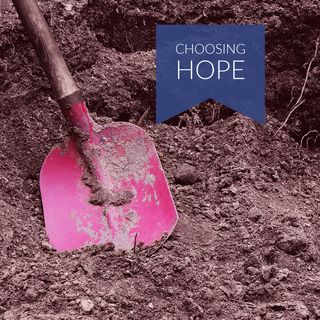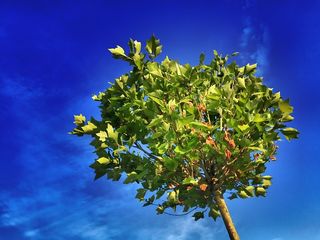Resilience
Finding a Useful Perspective in Troubling Times
There's always something we can do
Posted January 30, 2017

The following essay was published in the December 2016 edition of Womankind Magazine as "Choosing Hope." It was written in August 2016 when the divisive politics of the US presidential election were raging. Since then, we have elected a new president and the divisiveness in our community and around the world seems to have reached a new high. People are trying to find their voices, fighting for civil rights and justice. I am heartbroken to find that my essay is particularly timely now because it is built around a story from Jungian analyst, Clarissa Pinkola Estés, about her immigrant uncle’s fight for a useful perspective in troubling times. I share the essay here with permission.
The Buddha remarked on the impact of perspective when he said, "Life is a creation of the mind." Shakespeare put it this way when he said," There is nothing good or bad, but thinking makes it so." And the psychologist William James wrote, “Only those things I notice shape my mind.” Perspective influences everything. What happens in life is only part of the story; perspective accounts for what we see and the meaning we make of it.
The more I soak in the psychological atmosphere of our culture today—through news, journalism, social media, and conversations with colleagues, patients, friends, and family—the more I grow concerned that we are being shaped to see the world from a negative perspective, through a decidedly cynical lens. We are bombarded with images of terrorism, violence, dishonesty, manipulation, and greed. In the name of self-protection, we are taught to be on the lookout for what is wrong and to prepare ourselves for the worst. We are taught to keep our doors, as well as our hearts and minds, closed up and locked tight.
Many people may not readily realize that this is a perspective; it is not the Truth with a capital T. Yes, we live in a world that has its dangers and it is wise to be wary sometimes. Yes, people hurt one another, sometimes intentionally and in cruel ways, and it is wise to guard our hearts to some degree. But we are being shaped to view danger and violence as the first and the last word on the human condition. Many people have linked this version of human story to the influence of money in media and politics. Fear sells; violence sells. But this anxiety-driven cynicism is only one perspective—and not a particularly beneficial one either.
As a psychoanalyst, I feel compelled to shine a light on this dynamic, knowing the powerful way in which our perspective influences how we live our lives. When we look for the bad, we see it and we respond in kind. But the same is true for the good. Wayne Dyer put it succinctly when he wrote, “If you change the way you look at things, the things you look at change.”
In her little book, The Faithful Gardener, Jungian psychoanalyst Clarissa Pinkola Estés offers an alternative perspective to cynicism: hope. She tells a series of wise stories, drawing from her experiences as a young foster child living in a rural village about 100 miles west of Chicago. Her foster family had immigrated and settled there in the wake of World War II, making ongoing efforts to find and then relocate their relatives who had been held in Nazi camps long after the war was over. The central story features an elderly man known as Uncle, who had been traumatized by the cruelty he had witnessed and emotionally ravaged by all that he had lost. Sequestered by his now self-imposed solitude and silence, only his little niece could draw out the hope that was still in his heart.
Dr. Estés tells the sad story of how their new life in America actually re-traumatized her foster family—and Uncle, in particular. After just beginning to find some security and peace of mind in their village, the family received notification that their land was needed for a new toll-road. The government would “annex” all the homes in the village, including the fields and forests, the places that had become both their physical shelter and emotional haven. “Annex,” they discovered, was a euphemism for “take away and destroy.” Uncle nearly had a breakdown.
As the story goes, the day the demolition began, Uncle railed and protested the arrival of the bulldozers, then wearily collapsed in a pool of tears. Devastated, he withdrew into that familiar haze of suffering as he had during the War. Witnessing the garden of their new lives razed to the ground, hopelessness and depression should have taken him. But they did not.
One morning, perhaps a few weeks later, Uncle went to his garden shed and took out his tools. “I am doing something!” he cried. He lumbered out to a small plot of land, the only section remaining from the devastation of “progress.” And he began to dig. By the end of the day, with the help of neighbors who had come to lend a hand, he had dug a narrow trench nearly a mile long. Then, after sunset, he set it on fire.

This is where the lesson is revealed. The next morning, young Clarissa asked her Uncle why he had set the land on fire and what seeds he would plant in the new soil. As he fingered the black, burnt earth, Uncle answered, “I am making the ground ready. I will seed nothing. All I can do is send the invitation.” He went on to say that he hoped that a forest would grow there again someday, along the side of the toll-road. However, if they planted seeds, the trees would not grow. Dr. Estés writes, “The seeds of new life will find no hospitality or reason to rest here unless we leave it barren, unless we leave it bare so that a forest of seeds will find it hospitable.”
Uncle believed that it was his job to create an open, fertile space and further believed that, if he did so, the seeds of growth would come. He had hope that the birds of the air, the creatures of the land, and the wind and rain would bring the seeds as well as the conditions that this soil needed to recover and produce its bounty. Even in the face of so much suffering, in the distant past and the near present, Uncle chose to believe that good would still come.
I tell you this story to make the case that hope is the most useful perspective that we human beings can take in this fragile world of ours. Hope involves creating a space inside our hearts and minds in which we wait expectantly for the good to come. Hope relies on faith, for faith begins with belief in goodness itself—that there is a loving someone or something out there that we can depend on. Faith believes that this goodness is trustworthy and capable, and hope believes that it will take us up on our offer because it is generous and wants to provide.
Uncle’s story is a three-dimensional one. It is about tremendous suffering, trauma, and loss. But it is more than that. It also is a story about a man’s resilience and determination, about a family that cared enough to look for him when he was lost and to welcome him to a new home, about a little girl who was able to soften his heart. It is a story of second chances. And this goodness is what Uncle chose to see and what he held onto while he dug that trench, burned its soil, and waited expectantly for the seeds and the rain.
Emily Dickinson said that hope inspires the good to reveal itself. When we look for the good, we are more likely to find it. When we welcome the good with hospitable hearts and minds, it is more likely to come. In our cynical world, it is tempting to dismiss such a hopeful perspective as naïve and silly, a foolish denial of the reality of pain and suffering. But as Uncle’s story shows us, it is actually in the face of pain and suffering that hope does its best work.
Copyright 2017 Jennifer Kunst, PhD
Please share this story!
To learn more about Dr. Kunst, visit her website at www.drjenniferkunst.com




